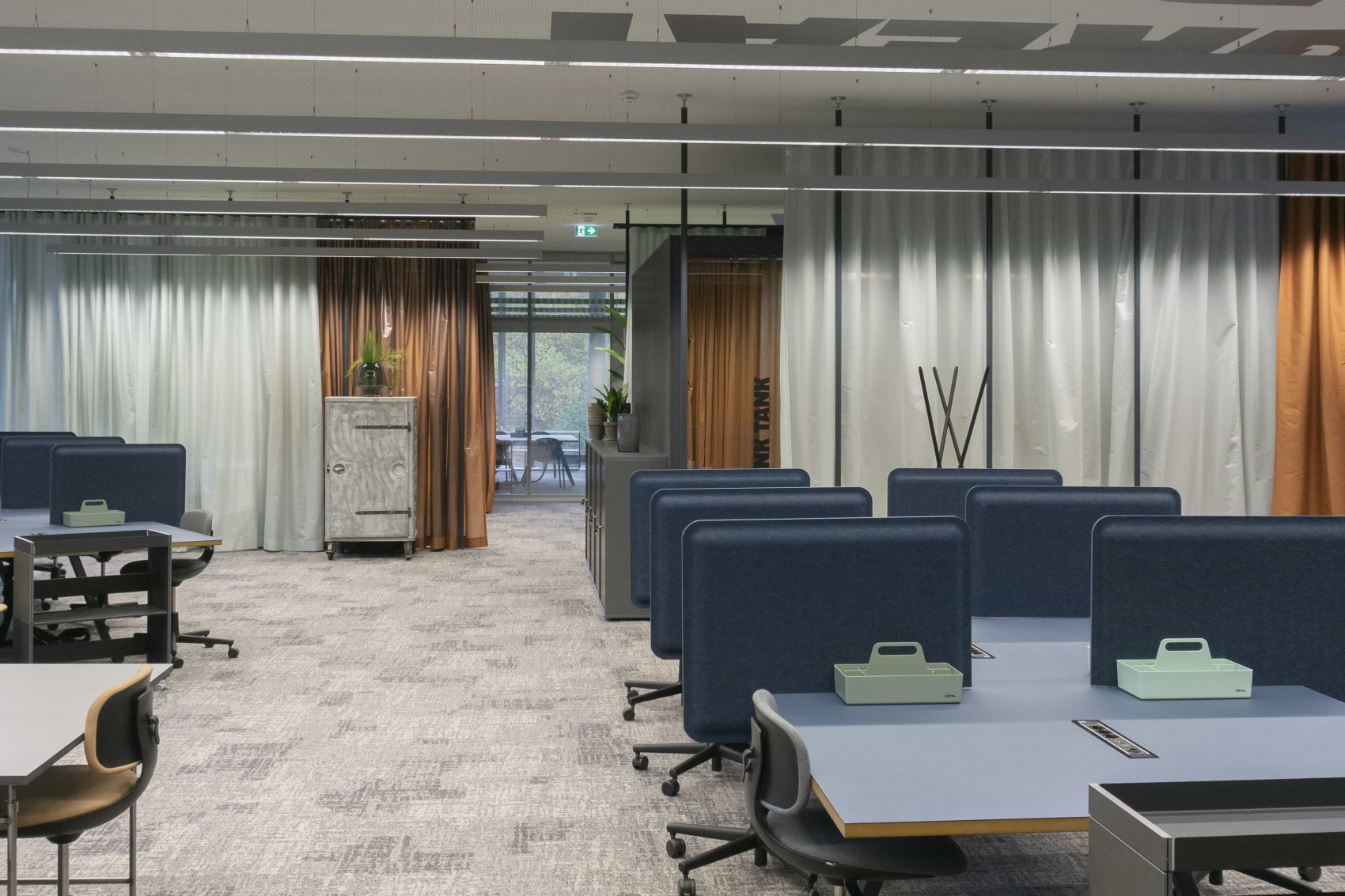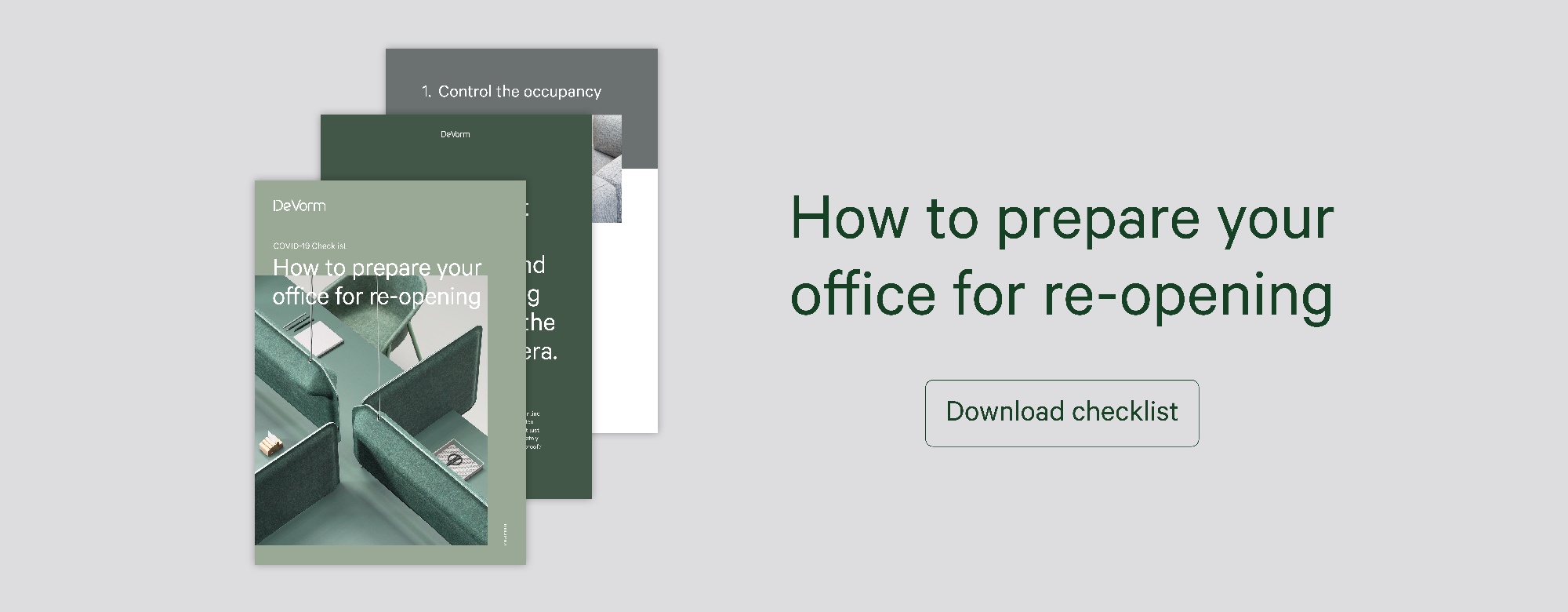Journal
How Will the Post-Pandemic Workplace Look Like in 2021
Companies are already preparing for the return to offices. While for many it is still unclear how and when to come back, one thing is certain: the post-pandemic workplace will not be the same as the one we left behind.
Just like our personal habits, the crisis is likely to shape our working routine. And the biggest change facing the post-pandemic workplace is physical distancing. For many companies, it will be the opposite of what they are used to. Many modern offices were designed around connection and teamwork. As a result, businesses existed in open-plan spaces with no boundaries and little privacy. But after the pandemic, people might feel unsafe in a place like that. And it will be the task of employers to make everyone feel comfortable in the new working reality.
Social distancing in office design
As a starting point, companies will have to put the social distancing protocols in force. Office desks have shrunk over the years, but now we will evidence the reverse trend. We will see the increasing demand for more individual space. As a result, many companies won't be able to maintain their usual occupancy - simply because they don't have enough room to accommodate everyone with the social distancing standards. Individual desks will be spaced out. Hot-desking is likely to disappear for a time being. On average, offices will have a lower occupancy to comply with the 6 ft rule.
Diederik Fokkema, the founder of the Dutch architecture firm Fokkema & Partners Architecten, estimates that the office occupancy will reduce by roughly one-third, having a consequence on the average office size as well:
"Our clients expect the occupancy rate to reduce, on average by 30%. As a result, they require less square meters for the new offices - we estimate this to decrease by 10-15%. Despite the shrinking size of workplaces, there is an increasing demand for more individual space. The intention to cram as many people as possible in one building is long gone."
Consequently, similar changes will happen in every part of the workplace. For instance, employers will have to set a maximum occupancy for shared spaces. Canteens and meeting rooms will accommodate a limited number of people, depending on the room size. On another side, shared spaces and common areas are likely to remain in demand. Mainly, due to the fact that collaboration and connecting are still going to happen on-site. Therefore, the need for settings and amenities to accommodate those processes remains very much relevant.
All these measures will inevitably have an impact on furniture choice. The crisis made many companies realise that their workplace is not adaptable enough. As a result, some will take measures to make offices more flexible. Easily movable and modular furniture will help to accommodate the new layout. Also, we will likely see more partitioning, such as workplace dividers and movable screens.

The new approach to office architecture
After all, the new reality will shape the architectural design. Some companies will be forced to retrofit their offices at a more radical level. The new buildings will be constructed with consideration of a 1.5-meter (or 6 feet) rule. Arjun Kaicker from Zaha Hadid Architects predicts that spaces will not flow into each other so much anymore.
“I think we’ll see wider corridors and doorways, more partitions between departments, and a lot more staircases.”
Floor plans are also likely to change. They will be redesigned with special attention to traffic flow. Every office will need to rethink their layout to ensure that people don't bump into each other. As a result, more space will be dedicated to pathways, along with signage creating a one-way movement. In the long run, this will likely lead to the growing predominance of low-rises over high-rises. The office buildings will have less floors with larger surface each.
In the long run, the focus on employee health and well-being will become a major driver of office design. The pandemic has exposed many shortcomings of our physical environments. In some offices, personal space was simply insufficient. This is going to change very soon, together with greater focus on other well-being factors, such as air quality and access to outdoor spaces. We can surely say that the workplace of tomorrow will be calibrated for a healthy state of our body and mind.
In the future, people will need a good reason to come to the physical workplace. It won't be a requirement, but rather an option. Therefore, the offices will need to have that added value, in a form of social cohesion and collaboration. To make it possible, companies will have to set a framework making the return to a physical office possible. Not only should people feel safe when they come back, but their experience should remain pleasant and purposeful.
To ensure employees feel that way, you need to rethink the office to make it comply with the social distancing protocols. However, that's not the only task - the new design should also retain its value in the long run, contributing to the employees' well-being for years to come. Learn how can you get your office ready for the new normal in our next article.




